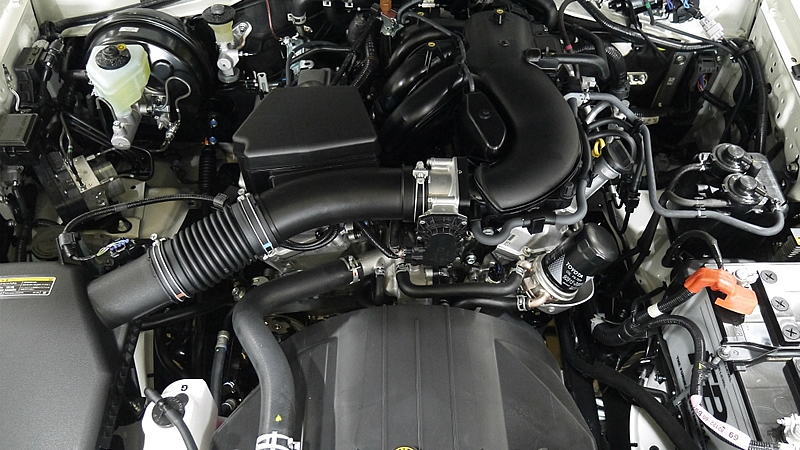Overview
Predecessor model of Land Cruiser Prado (Japan-only model)
In 1985, the first wagon (5 number) model was introduced into the Land Cruiser lineup. Exports to overseas specifications had already started in November of 1984 under model names such as “Land Cruiser II” and “Bandera”, but the domestic debut was delayed by a year.
While maintaining the heavy-duty image of the Land Cruiser 70 series van, this model was named the Land Cruiser Wagon (model LJ71G) and it became the predecessor of the Prado (Japan-label).
Engine & Variation
Fully equipped, even on the standard model
The engine Toyota put under the hood was a 2L-T type 2.4-liter in-line 4-cylinder OHC diesel turbo that generates a maximum output of 85PS (NET) / maximum torque of 19.2kgm / 138.87 lb.ft. The transmission was a 5-speed manual, and the transfer was a low-range 2-speed. Body variations are limited to 2-door short model (not treated as “3-door” because the rear gate is a double door that opens left and right). Two model levels were available, the standard LX5 and the advanced SX5. The SX5 was equipped with adjustable sports seats and power windows as standard equipment.
In addition, the standard grade LX5 was also differentiated from the van by having reclining rear seats and tilt steering. The emphasis was on comfort that, until then, was not normally a part of the 4WD body.
Also, station wagons had many advantages over vans since vans were subject to vehicle inspections and there were more parking lot restrictions on vans, but not wagons.
Exterior & Interior
Focus on the comfort of the spacious interior and the rear seats
In terms of the exterior, the van has independent front blinkers and side lights, while the wagon has them integrated in the front grille. The basic design of the interior is the same as that of the van.
Vans were regulated to having a certain amount of luggage room, whereas wagons did not have those types of restrictions, so Toyota was able to add ample legroom and reclining rear seats. This gave them a tremendous advantage in the market as far as comfort was concerned.
Chassis
The first Japanese 4WD undercarriage
Core Land Cruiser and 4WD fans at the time paid more attention to the running performance of the first domestic 4WD coil spring + rigid axle suspension than the equipment and comfort of a wagon. However, it was not as good as the traditional leaf spring + rigid axle type 70 series van, and its cross-country performance was not highly compared.
Overview
Rare model with few used cars
In addition to the difference in suspension, the major difference from the van is that the van has a lineup of middle wheelbase vehicles (2,600mm) and FRP top vehicles, while the wagon is only a short wheelbase (2,310mm) hardtop vehicle. There are no automatic transmission vehicles, either. Also, the van’s middle wheelbase model is equipped with a 3.4-liter in-line 4-cylinder OHV diesel turbo 13B-T engine that produces a maximum output of 120PS (NET) and a maximum torque of 29.0kgm / 209.75 lb.ft. One of the reasons why the T-type has not gained popularity is because of its weak image.
The Land Cruiser 70 was the first station wagon for the brand, and although it was an innovative model in a sense that it was one of the first to introduce the now common coil suspension, it was labeled as an unpopular car for the five years it was on sale. However, it was a model that played an important role in the evolution of the Prado, which later became a big hit, and because there are very few of these used, it’s hard to find one.




